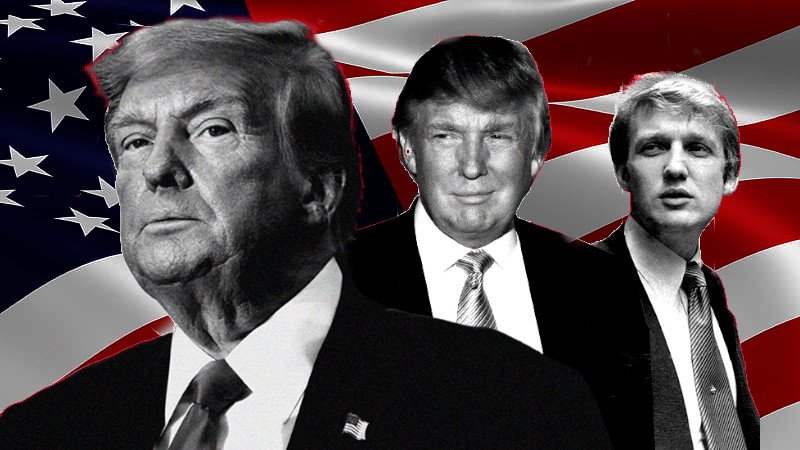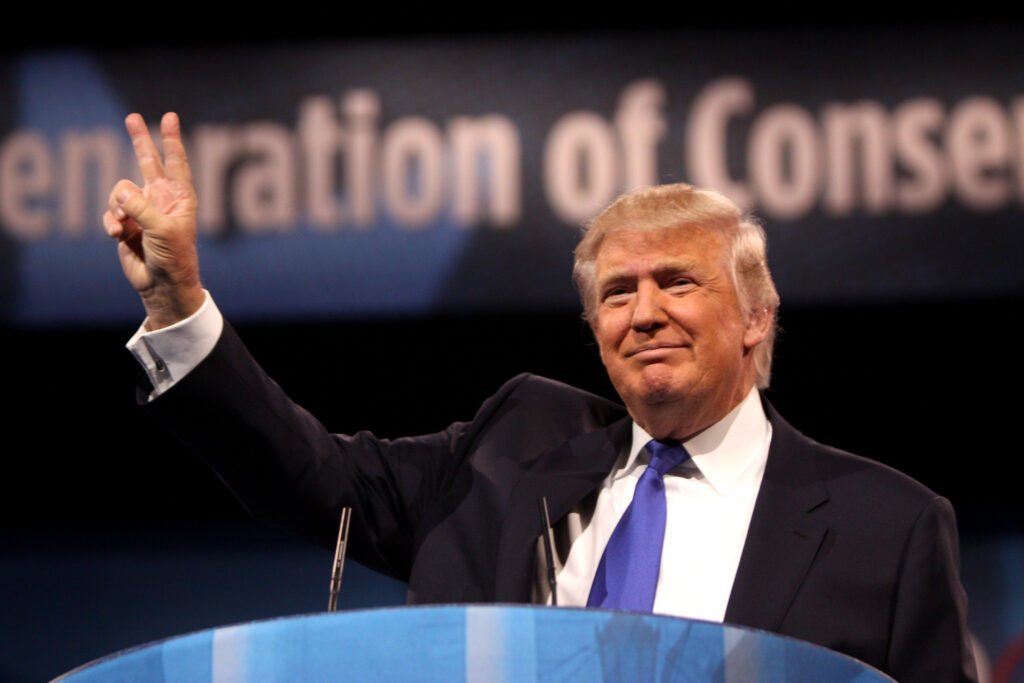Physical Address
304 North Cardinal St.
Dorchester Center, MA 02124
Physical Address
304 North Cardinal St.
Dorchester Center, MA 02124

Donald Trump a name synonymous with real estate, media stardom and polarizing politics, made history by becoming the 45th President of the United States of America. His rise to power was a story that only few could have predicted. With a background deeply rooted in business rather than politics, Trump’s journey to the White House is a testament to his keen understanding of media, an unconventional approach, and an ability to tap into the sentiments of many americans.
In this article, we’ll take a comprehensive look at how Donald Trump came to power, exploring the factors, strategies, and events that propelled him from being a business tycoon to the highest office in the U.S.

Donald John Trump was born on June 14, 1946, in Queens, New York City. His father, Fred Trump, was a prominent real estate developer who built a significant business empire focusing on residential construction. Growing up, Donald Trump was exposed to the world of real estate, learning the ropes of property development and investment from a young age.
After attending the Wharton School at the University of Pennsylvania, Trump officially joined his father’s company. Over the years, he shifted the focus from middle-class housing in Brooklyn and Queens to high-profile projects in Manhattan, which catapulted him into the limelight. Through ventures like the Trump Tower and the Grand Hyatt Hotel, Trump became a notable figure in the New York business scene.
The 1980s and 1990s saw Trump transform from a real estate mogul to a full-fledged celebrity. He appeared on numerous television shows, wrote books like The Art of the Deal, and maintained a high profile with interviews and public appearances. His lavish lifestyle, business acumen, and flamboyant personality made him a household name. However, his fame reached new heights with the premiere of The Apprentice in 2004.
The Apprentice was more than just a reality TV show; it was a platform that reinforced Trump’s brand as a successful, no-nonsense businessman. The catchphrase “You’re fired!” became iconic, embedding Trump in popular culture as a symbol of power and assertiveness. This media exposure built his reputation far beyond the business world and laid the groundwork for his political aspirations.
The idea of Donald Trump entering politics was not entirely new. Over the years, he had flirted with the notion of running for office, often hinting at a potential presidential bid. In 1987, he took out full-page newspaper ads calling for a new approach to foreign policy and economic practices, signaling his political ambitions.
However, it wasn’t until 2015 that Trump formally announced his candidacy for the 2016 presidential election. In a dramatic speech at Trump Tower, he famously declared: “We need somebody that literally will take this country and make it great again.” With his slogan “Make America Great Again,” Trump positioned himself as a political outsider, a man who would challenge the status quo and represent the voice of the average American.
Trump’s rise to power can be attributed to several key factors:
Trump’s campaign strategy was unorthodox but effective. He prioritized massive rallies over traditional fundraising and leaned into his reputation as a brash outsider. His main opponent in the Republican primary was a field of experienced politicians, including Ted Cruz, Marco Rubio, and Jeb Bush. Trump’s direct and confrontational style of debate set him apart and won him the Republican nomination.
The general election was a showdown between Trump and former Secretary of State Hillary Clinton. Clinton, with her long political resume and establishment backing, was widely seen as the favorite. However, Trump’s campaign focused on battleground states and key demographics. He targeted regions affected by job losses and economic stagnation, promising to bring back manufacturing jobs and renegotiate trade deals.
Several pivotal moments helped define Trump’s ascension:
On November 8, 2016, Donald Trump secured an unexpected victory. He won key swing states like Pennsylvania, Michigan, and Wisconsin, areas that were pivotal to his path to 270 electoral votes. Despite losing the popular vote by nearly three million votes, Trump’s electoral college win was decisive.
His victory stunned political analysts and defied polls that had predicted a win for Hillary Clinton. It highlighted deep divisions in the country and underscored the effectiveness of Trump’s message, which resonated with voters who felt left behind by globalization and economic changes.
Economic Discontent: Many Americans in rural and Rust Belt areas faced significant economic challenges. Trump’s promises to bring back jobs, reduce taxes, and renegotiate trade deals resonated with those who felt that their livelihoods had been compromised by globalization and automation.
Immigration Stance: Trump’s tough stance on immigration, including his promise to build a wall on the U.S.-Mexico border, appealed to voters who were concerned about illegal immigration and its impact on job availability and public safety.
Messaging and Branding: Trump’s campaign excelled at branding, from the MAGA hats to his direct and simple messaging. His speeches were crafted to be memorable and relatable, making it easy for voters to understand and align with his vision.
Clinton’s Challenges: Hillary Clinton’s campaign struggled with an image problem, as many voters saw her as part of the entrenched political establishment. The controversy over her emails and the perception of elitism worked in Trump’s favor.
Donald Trump’s presidency was marked by significant achievements and controversies. From the 2017 tax cuts and criminal justice reform to trade wars with China and an unconventional foreign policy, Trump’s tenure reshaped American politics and left a lasting impact on the Republican Party
His presidency also faced challenges, including two impeachments, widespread protests, and the COVID-19 pandemic. Regardless of one’s political stance, Trump’s rise and presidency highlighted shifts in American politics, including the power of populism, the influence of social media, and the changing nature of political campaigns.
His presidency also faced challenges, including two impeachments, widespread protests, and the COVID-19 pandemic. Regardless of one’s political stance, Trump’s rise and presidency highlighted shifts in American politics, including the power of populism, the influence of social media, and the changing nature of political campaigns.

In the lead-up to the 2024 U.S. presidential election, Donald Trump has been strategically positioning himself to regain the White House by appealing to his core base while attempting to expand his reach among voters. His strategy includes a strong focus on issues that resonate with his supporters, such as economic revival, immigration reform, and national security. Trump has been leveraging his substantial influence within the Republican Party and utilizing campaign rallies, media appearances, and social media to energize his base and maintain a visible presence.
However, Trump faces significant challenges in his comeback bid. These include ongoing legal battles, criticisms surrounding his handling of past controversies, and competition from other Republican hopefuls. Additionally, he is working to rebuild trust with segments of voters who may have been disillusioned by his previous administration or the events surrounding the 2020 election. The former president’s success will hinge on how effectively he navigates these challenges and presents himself as the leader who can address current national concerns.
Donald Trump’s journey to the White House was more than just a political campaign; it was a seismic shift in how elections are conducted and won. He leveraged his celebrity status, spoke to a segment of the population that felt ignored, and used modern technology to communicate directly with the electorate. His campaign and presidency have had a profound impact on American and global politics, redefining what it means to be a political leader in the 21st century.
As history looks back on Trump’s rise to power, it will be seen as a reflection of a unique time in American society—where reality TV, economic anxiety, and the power of media merged to create an unprecedented political moment.